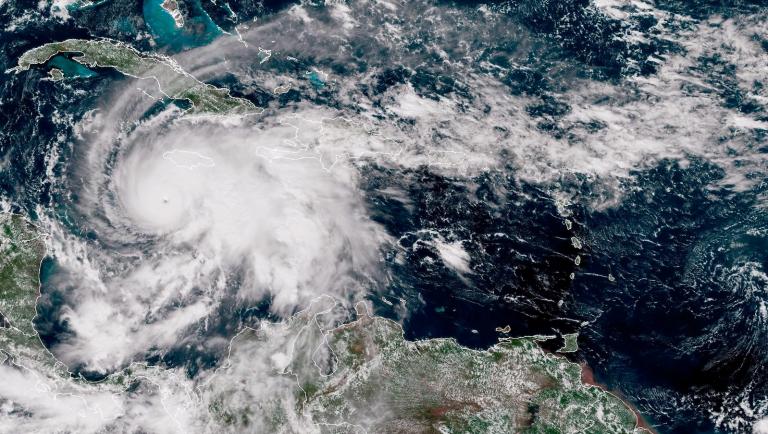 Talking about climate-policy developments gets tedious. Bear with us for the verdict on Durban.After running 36 hours into overtime, the climate talks in Durban, South Africa, finally wrapped up this weekend. As usual, all the dramatic stuff happened in the last 12 hours, after everyone had been beaten into submission by sheer exhaustion. I do not envy my brothers and sisters in the media who attend these things.
Talking about climate-policy developments gets tedious. Bear with us for the verdict on Durban.After running 36 hours into overtime, the climate talks in Durban, South Africa, finally wrapped up this weekend. As usual, all the dramatic stuff happened in the last 12 hours, after everyone had been beaten into submission by sheer exhaustion. I do not envy my brothers and sisters in the media who attend these things.
So what came out of it? Does it matter at all?
It gets a bit tedious writing about climate policy, since every single development warrants some variant of the same verdict: compared to what’s needed, a failure; compared to what’s possible, decent. And so it is with Durban. Here are what I consider the top five take-home points, in descending order of significance:
1. The world is still on course to 4 degrees C (7.2 degrees F) and higher, i.e., disaster.
Durban could not be expected to change this, of course, nor could any single event or any single decade’s worth of events. Nonetheless, as tedious as it gets, this is the context in which Durban must be understood. The nations of the world have repeatedly agreed to target a 2 degrees C (3.6 degrees F) temperature rise and they have repeatedly failed to pledge or implement the policies necessary to get there.
According to the indispensable Climate Action Tracker, if every country enacted and maintained every policy it has proposed thus far, temperature rise would reach 3.5 degrees C (6.3 degrees F) by 2100:
![]() Click for larger version.Climate Action Tracker
Click for larger version.Climate Action Tracker
That would dramatically raise the risk of triggering self-reinforcing feedbacks that send temperature farther upward, pushing them forever outside of humanity’s control.
2. The “remarkable” “landmark” agreement is less than meets the eye.
At the last minute, a deal was struck: the “Durban Platform for Enhanced Action.” (DPEA; see Kate Sheppard for a nice summary.) In it, all the signatories to Kyoto (and the U.S.) agreed to forge a treaty by 2015 that would bring all countries, developed and developing, under the aegis of a legally binding agreement by 2020.
Here’s one thing you can say for the DPEA: it probably saved the U.N. climate process from total dissolution. But, as Michael Levi argues, it is far from the triumph a credulous media is peddling. It initiates “a process to develop a protocol, another legal instrument, or an outcome with legal force under the Convention applicable to all Parties.”
Most reporters are taking “outcome with legal force” to mean “legally mandated reductions in emissions for everyone.” But that’s a rather heroic assumption. As Levi notes, it’s not exactly clear what “legal force” means. Any formal decision of COP could be taken to have some legal force — just maybe not that much. And what’s to say the legal force might not just apply to transparency or technology transfer, not emission reductions? And what does “applicable to all Parties” mean? Kyoto was applicable to all parties, but it didn’t require emission reductions of all them.
The E.U. undoubtedly has emission reductions in mind, but the U.S. might not, and India — which fought the deal up to the last minute and is responsible for “outcome with legal force” being added to the language — almost certainly doesn’t. There’s nothing to stop China and India from continuing to argue for “differentiated responsibilities” under the new agreement.
And let’s get serious: agree in 2015 to do something in 2020? Anyone think that will be a serious constraint on President Romney? Or any government four years from now, much less nine years from now? Even if all countries do follow through, delaying that long will, as the Climate Action Tracker notes, almost certainly put 2C out of reach, make 3.5C much more likely, and make the needed reductions much more expensive. Global emissions need to peak by 2020.
3. Nonetheless, there has been an important shift in climate geopolitics.
I think Levi is right that the DPEA is largely symbolic, but I think he’s too cynical about symbolism.
The fundamental division in climate geopolitics has been the one Kyoto cemented in place: developed (Annex 1) countries, which are expected to reduce emissions sharply, and non-Annex 1 (developing) countries, which aren’t. Much has changed since that division was put in place, obviously. China is now the world’s biggest emitter. Virtually all the rise in emissions in the next decades is expected to come from non-Annex 1 countries. They will determine the fate of the climate.
Yet they have strenuously resisted being brought under a treaty that puts legally binding requirements on them. (They’d rather just extend Kyoto, but the U.S. and E.U. won’t go along with that.) At Durban, Indian negotiator Jayanthi Natarajan, feeling that India was being made the scapegoat for the lack of a deal, made an impassioned plea that she could not “sign away the rights of 1.2 billion people” who are still in poverty and in need of energy and development.
Something different happened this time, though. Pressure on the BASIC countries (Brazil, South Africa, India, and China) came not just from Annex-1 countries (though E.U. climate rep Connie Hedegaard was reportedly relentless), but also from the Alliance of Small Island States (AOSIS) and the Least Developed Countries (LDCs). AOSIS chair Karl Hood put it bluntly: ” While they develop, we die; and why should we accept this?”
AOSIS and LDC are tiny countries, but for obvious reasons, they have unique moral authority: They quite literally face annihilation if temperature is not restrained. They have much to be angry with developed countries about, obviously, but they also have much to fear from BASIC countries’ explosive growth. This fragile alliance between climate change’s primary perpetrators and its primary victims seems to be dragging BASIC countries grudgingly into the fold.
The DPEA will not force developing countries to cut emissions more than they’ve already planned — in that sense it is “symbolic” — but it is a marker and a serious concession. The ones signing the agreement may do it in the spirit of continuing to fight off mandatory cuts, but their pledges are a lever for the younger generation in those countries, which like young people everywhere get it a lot better than their parents.
4. The boring stuff matters.
Outside the sexy DPEA story, small steps were made on several practical initiatives. The design of the much-ballyhooed Green Climate Fund was established, though no one yet knows where the money will come from. There was progress on international technology transfer, reporting/transparency, and deforestation. I cannot personally bear to dig into the details on these issues — just thinking about it makes me want to play Angry Birds — but these things, unlike the hypothetical 2020 treaty, are actually happening. They are among the few practical results of the U.N. process. Let us give them praise before, um, skipping over them.
5. U.N. climate talks neither impel nor impede climate policy as much as hyped.
Despite the enthusiasm of greens for the U.N. process, it’s always been an illusion that an international treaty could compel national decision makers to cut emissions faster their their domestic populations are willing. The failure of many Kyoto signatories to meet their goals made that clear enough. International climate commitments are reflections of national will, not constraints on it.
But by the same token, folks like David Victor (and many far less credible bandwagoning UNFCCC bashers) go too far when they say the U.N. process has “wasted time” or retarded progress. If an international agreement can’t compel nations to cut emissions, it probably couldn’t compel them to fund innovation or adaptation either. There are bilateral and multilateral ways to accelerate innovation and adaptation, but they’ve always been available, and they weren’t neglected just because some other people were talking about mitigation. Lots of folks have convinced themselves that there would have been rapid progress if the UNFCCC had reframed or changed its focus several decades ago, but that’s always struck me as a highly dubious proposition.
Either way, the problem has always been the same: National governments lack the will to challenge entrenched constituencies and take economic risks in the name of a problem that most populations still see as geographically and temporally distant. Only when a critical mass within those populations becomes noisy and powerful enough to push governments into action will the U.N. process come unstuck.



